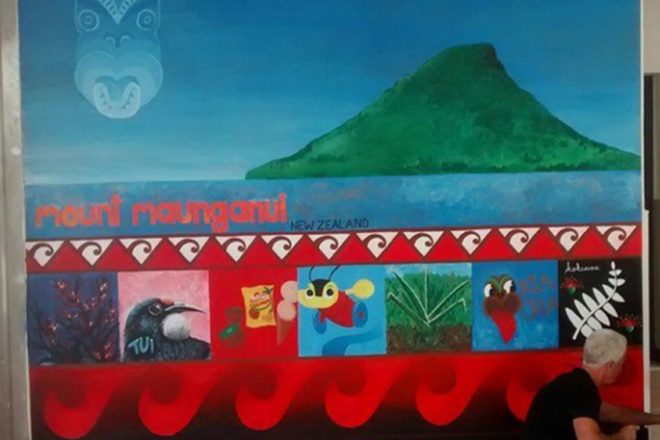
照片:来自布鲁克菲尔德的 Te Kura o Manunui 学校的学生和友谊协会的约翰·霍奇森。来源:布莱迪·汤普森。
布鲁克菲尔德的 Te Kura o Manunui 学生一直在深入研究中国文化。像德文郡、莱利、迦勒和香奈儿这样的学生发现,颜色,尤其是红色,在中国具有特殊的含义。他们还了解了农历新年的传统,例如鼠年。
学生们告诉《周末太阳报》,“中国人喜欢吃饺子。我们也是。”他们甚至已经开始学习普通话,现在可以说一些单词了。
为了加强这种联系,新中友好协会组织了一次小学艺术交流会。中国江西省的一幅画描绘了来自两国的孩子坐在旗帜上,周围环绕着两种文化的象征。
Kura o Manunui也将参加,将自己的艺术品送到中国。最好的作品将在中文学校展出。
此外,友谊协会正在发起陶朗加中学艺术竞赛,分为五个不同的类别。其中一类是新西兰与中国关系中的重要人物路易·艾利的肖像。
友谊协会的约翰·霍奇森将其中一个类别解释为一首四字诗。学生必须用英语写作,解释诗歌的含义以及他们为什么选择这首诗。另一个类别邀请代表新西兰和中国之间友谊的艺术品。
中国学生交流之旅的计划也在制定中。这个想法是向中国人介绍传统的毛利文化。霍奇森还建议包括一场由两国混合队参加的触摸式橄榄球比赛。
Kura o Manunui的学生渴望更多地了解中国,希望有一天能来访。他们了解了中国庞大的产品种类、他们在奥运会上的成功以及充满活力的农历新年庆祝活动。
对于有兴趣加入或寻求更多信息的学校,请致电 027 284 9738 与 John Hodgson 联系
。



























































